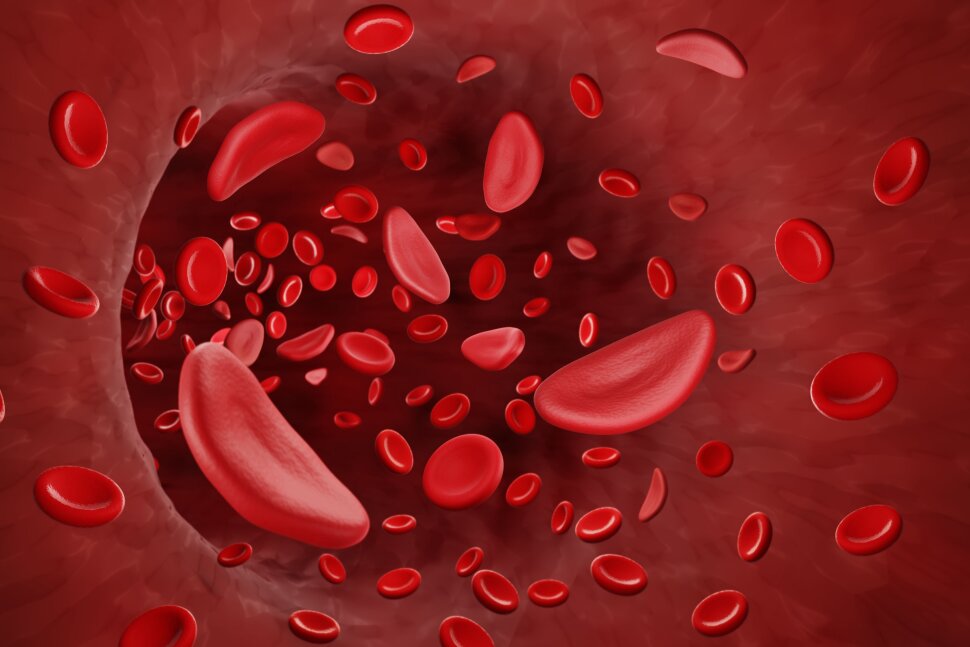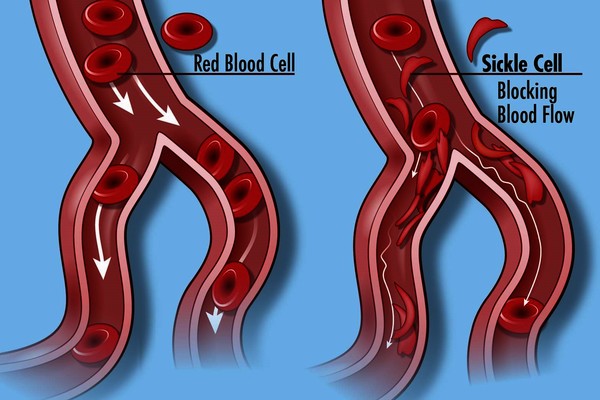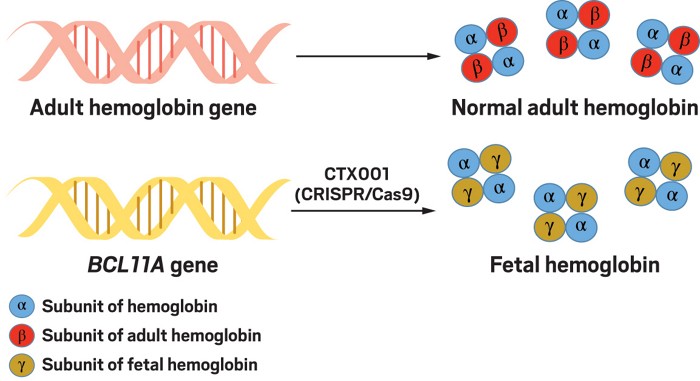David Odekunle
How CRISPR helped treat a case of Sickle Cell Disease?
What is sickle cell disease?
Before we dive into how CRISPR was able to successfully help treat a case of sickle cell, let us explore what sickle cell disease is. Normally, red blood cells carry the hemoglobin-A, which is composed of two alpha and two beta chains. However, those with sickle cell anemia carry hemoglobin-S.
Essentially, they have a point mutation, where a single base pair is switched in the beta-globin chain found on chromosome 11, and valine is produced rather than the typical glutamic acid. This change of amino acid, from the polar glutamic acid to the nonpolar valine causes the red blood cells to sickle in shape. This sickling of red blood cells causes clumps in the body and sickled cells tend to self-destruct more readily, meaning that those with sickle cell disease do not have enough red blood cells to carry oxygen to the body.
What roles does CRISPR Play?
With the negative that sickle cell anemia can have on the human body, scientists have explored how CRISPR can be used as a genome editing tool for those with the condition. In developing fetuses, the red blood cells carry hemoglobin-F, which is composed of two alpha chains and two fetal chains, instead of two beta chains. Later on in development, the fetal hemoglobin typically becomes beta hemoglobin. BCL11A, a transcriptional repressor, normally shuts down the expression of the gamma subunit which allows the beta subunit to come out. To treat sickle cell, scientists first realized that if they could reactivate gamma in patients with sickle cell disease, they would have hemoglobin-S, but also hemoglobin-F, which would function properly in preventing the sickling. To do this, a guide RNA was created that could target the enhancer of the BCL11A and disrupt it. Once mutated, the BCL11A gene would not perform regularly and shut down the expression of the gamma subunit. With both Hemoglobin-F and Hemoglobin-S in the bloodstream, the sickle hemoglobin is prevented from sticking to another.

Concluding Thoughts
With the advancements taking place in genome editing, CRISPR shows continued promise in that it functions to make these double-stranded breaks through RNA-guided cleavage of DNA more accurately than other current methods.



